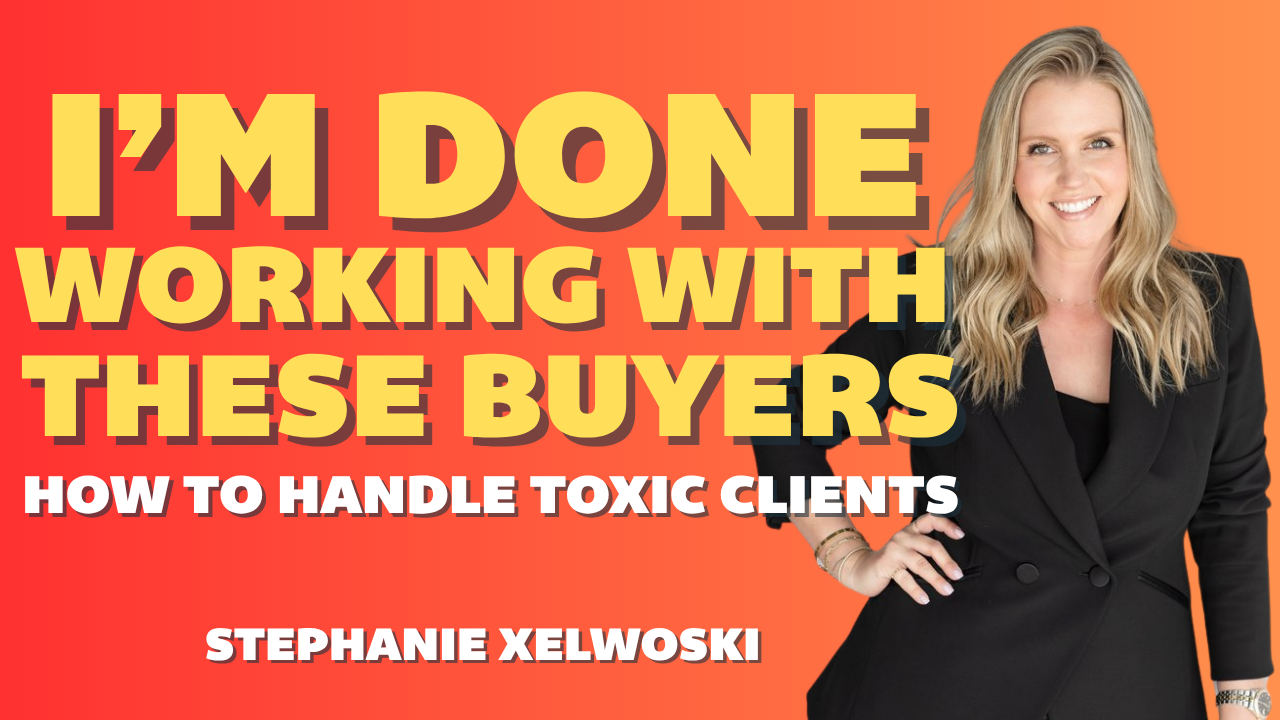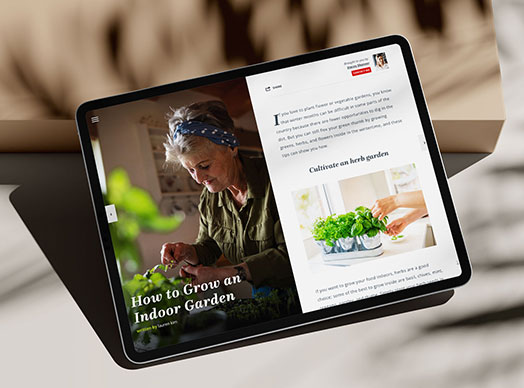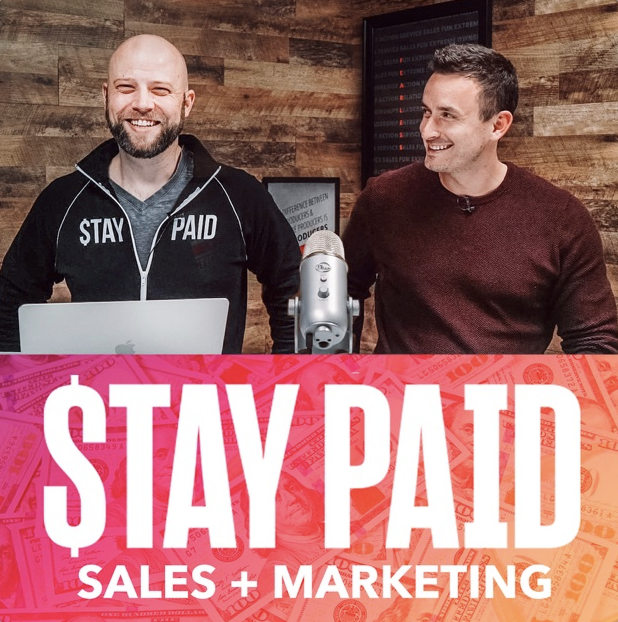Ep. 147: Anthony Sarandrea – Understanding Your Buyer to Drive Leads Online with Anthony Sarandrea
Anthony Sarandrea is recognized as one of the top lead generators in the world—running a team that specializes in driving thousands of inbound phone calls daily across a number of verticals, including health, finance, and education. He’s consistently featured as one of the top under 30 year old entrepreneurs, and was featured alongside Snapchat’s founder Evan Spiegel as one of the entrepreneurs who are changing the world.
On today’s episode of Stay Paid, Sarandrea explains the importance of digital advertising and how it can help you take your business to the next level.
Key Points:
- You need to be running ads on a diversity of outlets to reach a wide audience.
- Don’t focus only on running ads that are on brand. Try something new and creative that will stand out.
- Tap into people’s emotions with niche ads targeted to the individual.
Q: Tell us a little bit about yourself:
I started off door knocking selling solar hot water systems in the 120 degree Arizona summer. That really built a lot of character. I saw someone literally shooting hoops on a Tuesday in the middle of the day and I said, “I want to do whatever the he** that guy does because I’m out here busting my a** for twelve hour days, sweating like a dog.” But I hated the idea of being in front of computers and not being able to talk to people. So I asked to intern for him for free, and I was still working, but I was learning from this guy and eventually got decent enough where I built myself a full-time job.
I like to joke when people ask, “When did you start your business?” I got enough project work, essentially, to call it a business but I really built myself a job. From there I got to experience a lot of the benefits of the internet: high-speed, touch, not being time-bound—so while you and I are talking right now we’re converting customers, where before I had to be knocking on doors every ten minutes in order to generate revenue. So all of these things became really addicting to me around the internet, and I was really excited by it. I thought, “All my friends and family are off working 9 to 5 and I don’t get to see them. And I’m not bored at home, but f*** it, let me start hiring some of them.” I started bringing them on as I got more busy and grew it to hiring four or five friends and two of my family members, and we grew pretty rapidly.
Fast forward to today, and we essentially are a lending tree for a more subprime individual. We attract a customer’s interests enough to fill out an application, make a phone call, fill out a form, and then we send it to a Geico or something like that to do the underwriting and the actual work. So the backend of actual fulfillment of the products we’re partnering with companies on and we’re focused on being a marketing machine that drives a high number of customers to different financial services.
Q: Is that mainly through Facebook? Or do you work with other digital marketing platforms?
When we first started it was 95 to 99 percent Instagram. Today, the break up is Instagram, Facebook, Snapchat, and even TikTok. We’re also on YouTube and native ads, so we touch or are testing just about every platform out there right now. Facebook has really become less than 50 percent of our traffic, which is really exciting for us. Not because Facebook is bad, but just in terms of diversification. A lot of online businesses run entirely on Facebook, which I was always scared sh****** of because it felt like a one-legged table that could topple over at any time. So I’m really proud to say we’re sustainably on a variety of platforms.
Q: What is the biggest mistake you see people make in social media advertising?
I think there’s a handful of things—one of them is thinking you’re going to launch an ad and all of a sudden you’re going to be a millionaire. And it’s funny because you hear all these Instagram and Facebook success stories, and think, “I put something up there and spent $20 and didn’t make $1,000, this thing sucks.” That, coupled with trying to outsmart Facebook, and what I mean by that is, placing the pixel correctly to teach Facebook what you actually want. So do you want a contact? Do you want someone to call in? Are you sending that information back to Facebook so it can do its job? And Facebook does its job way better than you or I could ever guess. Facebook’s algorithms are way more advanced than people give it credit for.
The takeaways to expand on those are realizing you’re not going to be a millionaire overnight. You really need to lose money in order to start training the pixel and start getting more mature on your campaigns and start building up social proof. If you ask me tactically for a real estate agent or an insurance broker, there’s really two easy ways: monitoring comments and responding within a minute if you can, and also retargeting campaigns. What that looks like is if you came to my site, I’m an insurance agent, you see my stuff following you everywhere, and you’re thinking about using me, I probably look bigger than life. There’s intangible value to that. And those are two simple things most people get overwhelmed with the dream of, “I’m going to launch a Facebook ad and drive a Lamborghini in two weeks.”
Q: What would you recommend as a budget for people just starting out?
There’s no perfect answer, but I would 2x the lifetime value of your customer per day, and that might not make sense for a real estate agent, but let’s say I’m selling duvet covers and they’re $100 each. My margin on that is $60. I would 2x that, so I would spend $120 a day, and really the goal is, “Can I drive one or two sales in the first week?” So I spend $500-$600, it’s naive for me to spend $5,000 before I get a sale. But if there’s some life there and I spent $120 and got one sale, that’s a healthy margin. It definitely depends on the person and their risk tolerance and what they’re able to set aside, but that’s a generic enough example.
Q: What numbers are you looking at, and what should people be tracking?
One thing that most people miss is looking at the lifetime value of that person. A lot of times they’ll look at it as the first purchase cost, and they’ll think, “OK, well, for gym memberships people pay me $20 a month so I can only spend $20 to acquire a customer.” And I’ll say, “OK, but how long do they stay on with you? Nine months? So they’re worth more to you.” These are little simple things that I think a lot of people miss. They might come to an agency saying, “I can spend this,” but that’s really not their LTV. Real estate agents are a great example. What’s the commission if you bring on one person? OK, $5,000, and you want to spend $499.99 and see if this thing works? That doesn’t make sense. If I made $5,000 on average commissions, I would be good spending $10,000 before I look at if I’m getting traction out of this.
As far as the metrics, work backward from LTV. With the gym example again, for every conversation you have, how many does it take to turn into an actual enrollment or customer? If it’s one out of every two, you’re down to $90 per lead. Taking rough numbers, if 3 percent of people who visit your site turn into a lead, you can work backward down to the click and see what you can afford to pay per click.
Q: What are your thoughts for small business owners on the advantages and disadvantages for each platform?
Generically speaking, one thing we see across all platforms is you have such a small amount of time to get people’s attention. We split test the he** out of the first three seconds of a video. It sounds so short and crazy but we’ll have people start flipping it off and crazy stuff because we’re noticing that, on Facebook for example, I’m competing with your mom, your girlfriend, your best friend, for your attention. I have to be more relevant and grabby than that.
As far as where to start, Facebook is very solid. YouTube’s keyword search intent is very interesting because you’re getting a lot of keyword search intent people, but you’re getting it on a video ad unit where you have a much better chance of selling. But I still recommend Facebook. I would be running a campaign to your current customer list, to their friends and family, and to a look-alike list. And I continue to be shocked by how much the creative makes a massive difference. Obviously the audience is very important, the platform is important, but the reality is, if I have a billboard on the side of the road that looks amazing and has a phenomenal offer, I’ll probably get a lot of attention.
Facebook is still generally the cheapest. A downfall there is the intent isn’t always as high. Even pulling someone off of Instagram to my website, I notice the quality of people is much higher because the intent is a lot higher. At first we fell into the fallacy that someone isn’t going to want to get off Instagram or Snapchat, but we realized if we are able to pull them off the platform, we’ve done a really good job. Someone on Facebook might be quicker to click.
Native ads are where people are there to digest long-form content and learn, so instead of a traditional landing page, it’s in an article that’s more educational. For YouTube, people generally go there for how-tos or to listen to music. So something like “How to Prep Your House to Sell for More Money,” that’s something that will play a lot nicer. Even just digesting how you search as a consumer, you’ll get on a lot of retargeting lists and you can think about what you didn’t like.
Q: You seem to be the master of direct response, with over a million customers per year:
Yes, and a lot of that is because we focus very little on branding, not that we should or shouldn’t be, and I actually think that’s a downfall of ours because we’re losing a lot of intangibles. But when I’m running to auto insurance and it’s looking at divorced moms who are on there crying because their auto insurance is too high after their divorce, I’m pulling on a very niche emotional string. I’m answering someone’s emotional needs at a very direct level, and that’s where the response comes in.
Q: What types of ads do you recommend people run?
There’s a book by a guy named Jay Baer called Youtility. It’s actually a customer service and social media book, but I actually think it’s one of the best sales books. One of the examples in there is a real estate agent and mom who has two or three kids, and she found a Facebook group that was for new moms. All she did in there was educate on how to be a great new mom, and I want to say she had 25 extra sales just from posting in that group. The reason was because when you have a kid, you might want to get a bigger home. She wasn’t coming in saying, “Hey, I’m a real estate agent.” She was adding value: “Here’s how to be a good mom, and by the way, I’m a real estate agent. So, if you’re targeting new parents, they’ll probably want to upsize their home and I would make my creative around that. Make your creative specific to the individual.
Q: What advice would you give your younger self?
A big clicking point for me was, I had a mentor a couple years ago who said, “If you can’t make $100,000 in a sales job, I will personally sh*** you in the face.” Basically there’s no risk. I would tell my younger self, “I’m going to be OK. I know how to talk and how to sell.” My taking a “risk” on my business and making long-term investments really isn’t that much of a risk. I always felt like I could get a normal job as a backup. I would tell myself to make long-term investments in myself and my business.
Connect with Anthony:
- Instagram @anthonysarandrea
- anthonysarandrea.com
Action Items:
- Look at your transactions from the past year. Ask yourself what is unique about those clients that you can tap into to understand your buyer on a deeper level.















 Soundcloud
Soundcloud iHeart Radio
iHeart Radio Spotify
Spotify Spotify
Spotify


